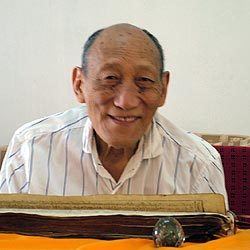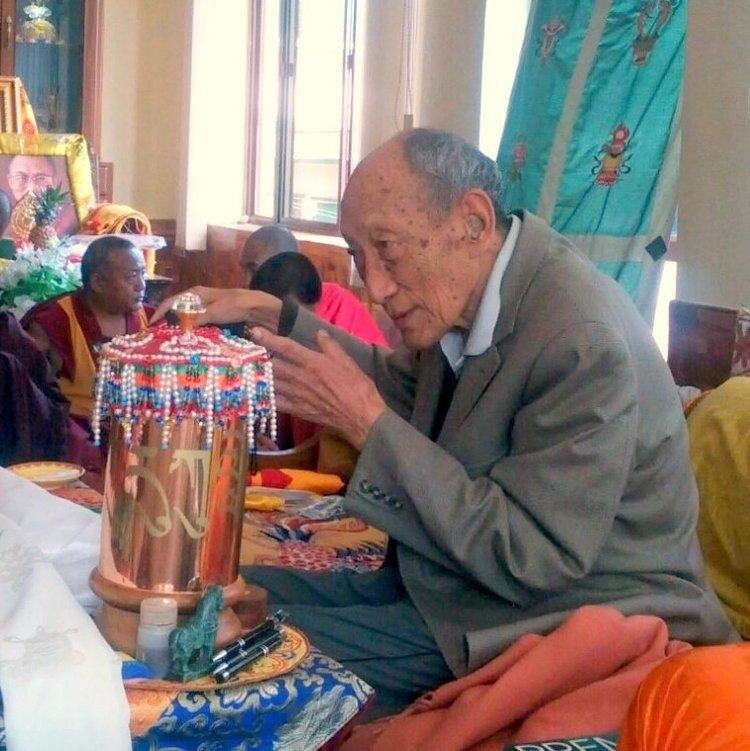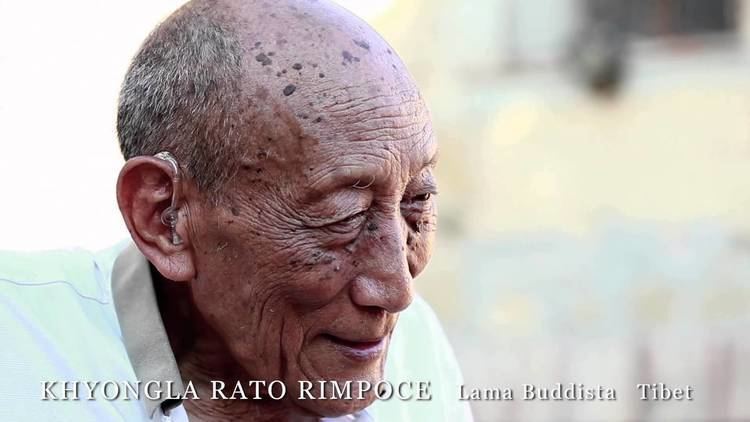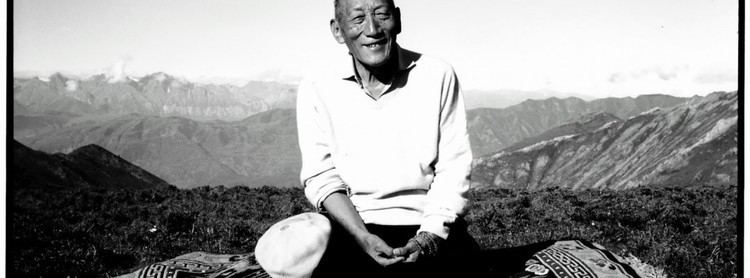Name Khyongla Rato | Dharma names Nawang Losang Title Rinpoche | |
 | ||
Nationality American (previously Tibetan) | ||
Predecessor 9th Khyongla Rinpoche | ||
Khyongla rato rimpoche il mondo che vorrei di ilaria freccia
Khyongla Rato, also known as Khyongla Rato Rinpoche, Rato Khyongla Rinpoche, Khyongla Rinpoche, and also as Nawang Losang, his monk's name, is a scholar and teacher in the Gelugpa tradition of Tibetan Buddhism. He was born in what was then the Kham region of Tibet and was recognized as an incarnate lama at an early age. He spent over 30 years of his life as a monk studying in the monasteries of Tibet and receiving teachings from many highly qualified lamas.
Contents
- Khyongla rato rimpoche il mondo che vorrei di ilaria freccia
- Buddhism khyongla rato rinpoche 37 practices of a bodhisattva part 1
- Name and history
- Teachers
- Publications
- The Tibet Center
- Films
- References

In 1959, after the Chinese communists took over, Khyongla Rato left Tibet, crossing the Himalayas to India. Eventually he came to Europe and then the US, and in 1968 he starting living in New York City. In 1975 he founded The Tibet Center, a center for the study of Buddhism. For more than 30 years he was the director and main teacher at the Tibet Center, teaching primarily in English. As of 2014, he still teaches at The Tibet Center whenever his schedule permits.

In 1977 Khyonlga Rato's autobiography, My Life and Lives, was published. In 1993 he appeared in the Bertolucci film, Little Buddha. In 2014 he appeared in a documentary film about one of his students Nicholas Vreeland, Monk with a Camera.

Buddhism khyongla rato rinpoche 37 practices of a bodhisattva part 1
Name and history
Khyongla Rinpoche is considered to be the 10th incarnation of a lama (the first Khyongla) who was born in 1510, and who as a child was known as Jigme; later in life he became widely known for his teaching of the dharma, and then people started calling him the "Lama from Khyong Yul" or "Khyongla".
The name Rato is a reference to Rato Monastery, aka Rato Dratsang, where Khyongla Rato studied.
The current Khyongla Rinpoche was born in 1923, in a small village called Ophor, south of Chamdo in the Kham region of what was then Tibet. At the age of five, Norbu, as he was then known, was recognized as an incarnate lama, and on his 6th birthday he was taken to his labrang (a lama's residence). He became a monk and studied at Rato Monastery, later moving to Drepung Monastery, where he received his Lharampa Geshe degree (equivalent to Doctor of Divinity), and finally to Gyuto Tantric University, where he served as abbot.
In 1958, the 14th Dalai Lama was taking the examinations for his Lharampa Geshe degree. Khyongla Rato was asked to be one of two scholars who, during Monlam, would represent Rato Monastery as debating challengers in the Dalai Lama's final examination at the Jokhang. Altogether there were eighty challengers from ten monasteries. As Khyongla Rato says in his autobiography, on page 233, when it was his turn to debate, "For half an hour our thrilling interchange continued until the senior tutor, my good friend Ling Rinpoche, raised his hand and I returned to my place, exceedingly joyful and relieved."
Teachers
Khyongla Rato Rinpoche studied with over 70 teachers, including Konchok Gyatso, Geshe Yeshe Loden, and from the age of 25 with Kyabje Ling Rinpoche, the senior tutor of His Holiness the 14th Dalai Lama. While Khyongla Rinpoche was still quite young, he attended a teaching from Pabongkhapa Déchen Nyingpo, and this served as a significant inspiration to him.
Publications
While first in India, at the request of the Dalai Lama, Khyongla Rato Rinpoche helped to write texts on the grammar, literature, history and religion of Tibet; these were used in the education of the families of Tibetan exiles. In the 1970s, as a result of urging from his students, Khyongla Rato wrote an autobiography, My Life and Lives; the book focuses primarily on his years in Tibet. Joseph Campbell, the American mythologist, edited the book and wrote the introduction.
The Tibet Center
In 1975, Khyongla Rato founded The Tibet Center in New York City. The center is also known as Kunkhyab Thardo Ling (translation: Land pervaded with Seekers of Liberation), a name that was given to the center by Ling Rinpoche. Khyongla Rato has taught at the Tibet Center for almost 40 years.
Over the years many different teachers have taught at The Tibet Center, including not only high lamas from Tibetan Buddhism, but also Buddhists from the Chan, Theravadan and Zen traditions, as well as teachers from the Jain, Hindu and Christian religions, and scientists and philosophers.
After its founding, Khyongla Rato was for many years the director of The Tibet Center. The current director is one of his students, Geshe Nicholas Vreeland, the subject of the documentary film Monk With A Camera.
Films
Despite having no prior acting experience, Khyongla Rato was asked to portray a monk in the filming of Little Buddha, directed by Bernardo Bertolucci and released in 1993. Khyongla Rato consulted the Dalai Lama, who told him he should go ahead and do this, so he ended up playing the role of the abbot of the Tibetan Buddhist monastery in Bhutan.
Kyongla Rato Rinpoche has considerable screen time in the 2014 documentary Monk with a Camera, because he is the "root guru" of Nicholas Vreeland, the subject of the film.
